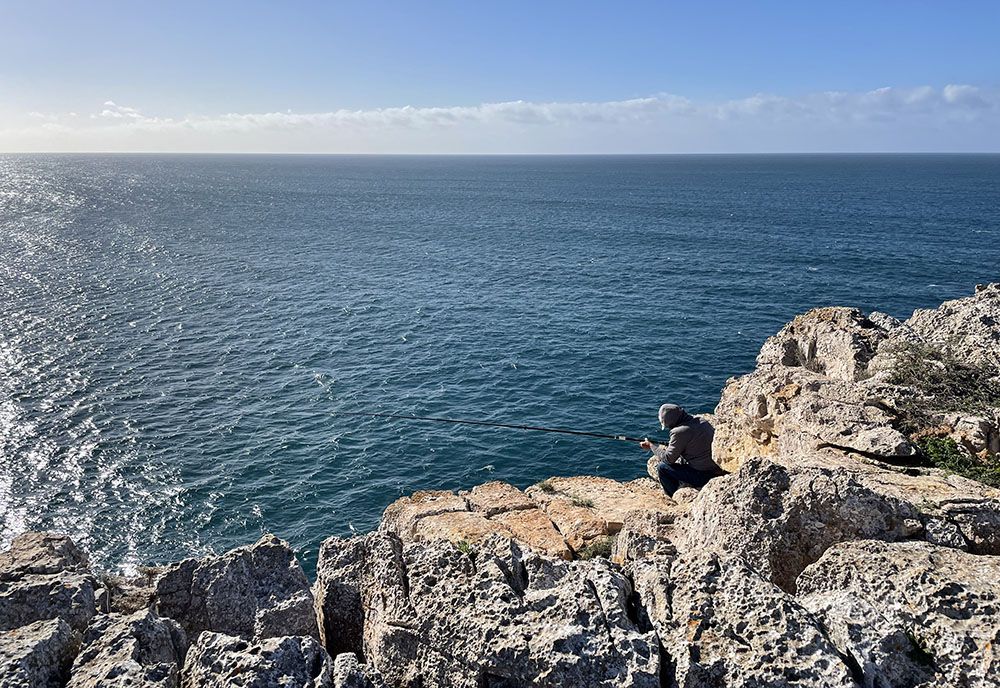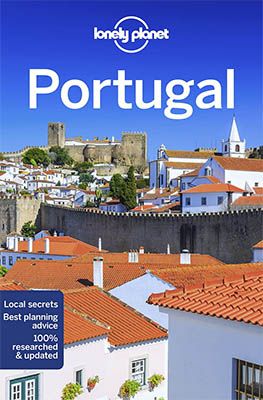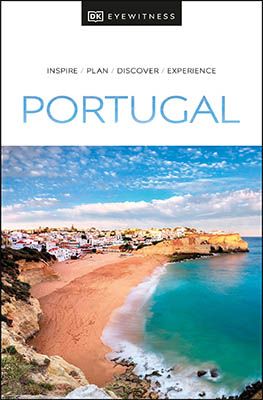Most people know the Algarve mainly for its beautiful coastal landscapes, wonderful sandy beaches, golf courses and sunny climate. But this popular southernmost region has much more to offer. Outside the cities, you will find a rolling, wooded landscape with beautiful, historic towns and fortresses. Further east, a series of sandy islands and lagoons form part of a protected nature reserve. To the west, a different, more remote and wilder Algarve beckons. Here you come to enjoy the tranquillity and views of a turbulent Atlantic Ocean.
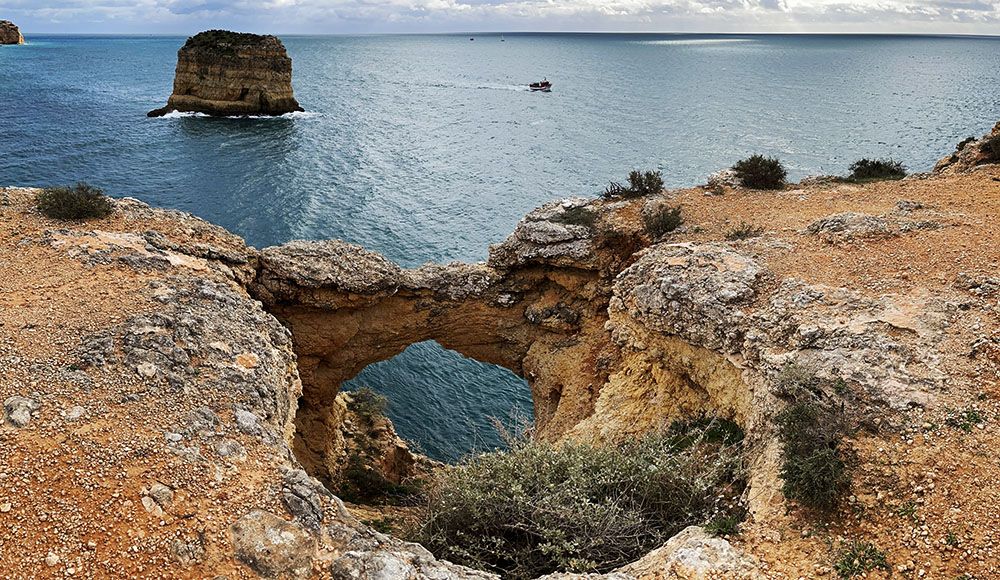
What there is to see and do in the Algarve
We visited the Algarve in winter. This way, we could temporarily escape the wet, snowless winter in our own country. For our stay, we chose Portimão as our home base. From here we explored the Algarve from Faro to Sagres in the west. In this blog, we describe some of our favourites as a suggestion for your visit to the Algarve.
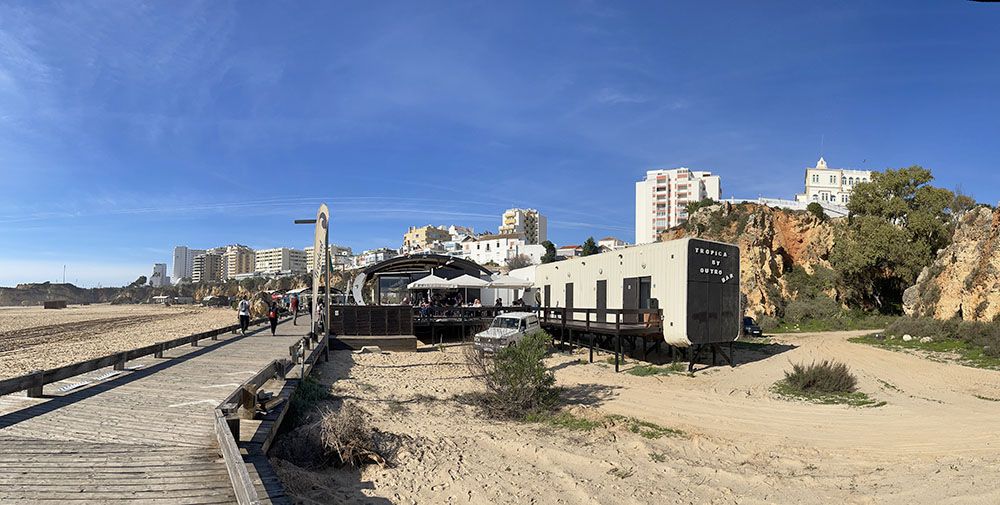
Loulé
Fairly close to Faro, but a bit more inland is Loulé. It is a small town with a special character and a fascinating history. Loulé is especially known for its covered, great atmosphere fruit and vegetable market. Especially on Saturdays, when the farmers from the surrounding area bring their fresh products to the city. Outside the centuries-old market hall too you will find many stalls with regional products.
Already in the time of the Moors, Loulé was a flourishing trade centre. To protect the city, the Moors built a castle in the 12th century. From the castle ramparts, you have a beautiful view over the old city. The Moorish influence is visible everywhere in Loulé as well. There are the ruins of an Islamic bathhouse. The beautiful chapel Nossa Senhora da Conceição is also worth a visit. You can still see the foundations of a 12th-century Moorish house in the floor. And the high bell tower of the Matriz de São Clemente used to be a minaret.
What also makes Loulé interesting, as far as we’re concerned, is its quiet surroundings. You will not find the mass tourism that you get directly on the coast in the high season. You will find culture and history, and beautiful hiking trails.
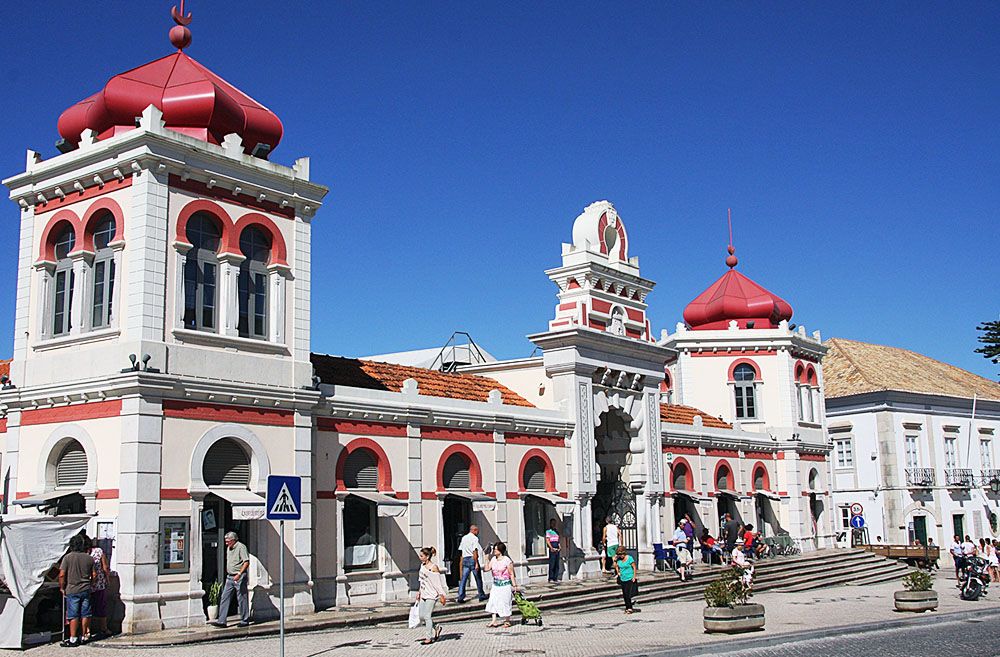
Faro
Faro is the gateway to the Algarve. The international airport is located in the capital of the region. Most travellers ignore Faro upon arrival. As soon as they pick up their hire car, they drive on to other coastal cities like Albufeira and Portimão. Yet the quiet Faro is definitely worth a visit.
The old city has Roman and Moorish foundations and is surrounded by thick defensive walls. Faro was badly damaged by a major earthquake in the middle of the 18th century. The numerous sights are therefore mainly from the 18th and 19th centuries. One of the exceptions is the Cathedral of Se from the 13th century. After the earthquake, the beautiful church was perfectly restored. When visiting the cathedral, don’t forget the beautiful view from the tower!
Just like in Évora, Faro has a chapel of bones. You will find the chapel at the back of the Igreja de Nosso Senhora do Carmo. Apart from other interesting old churches, the remaining city gates are also places of interest. Be sure to check out the Arco da Vila. But you don’t necessarily have to visit historic buildings to enjoy Faro. The maze of cobbled streets and leafy squares alone make a visit to Faro a special pleasure.
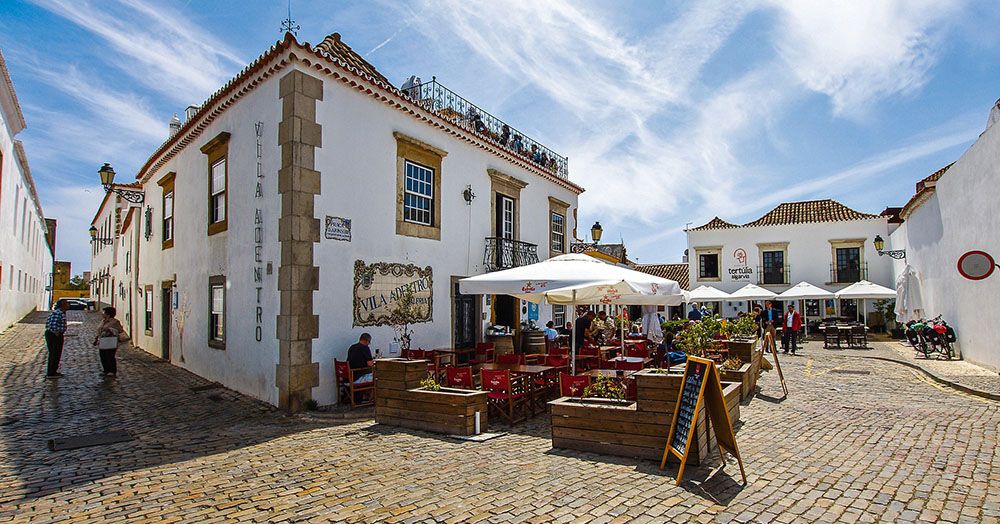
Portimão
Portimão is the second largest city in the region. We think that the city should not rely on history and external beauty. You will find many high-rise buildings, especially near the beach. But in our opinion, Portimão more than makes up for this. The city is situated along the beautiful Arade River. Thanks to the tide, the water here is brackish and attracts many fish and special species of birds, for example, flamingos and spoonbills, but also literally hundreds of storks. From the city, you can go on beautiful canoe trips upstream at high tide.
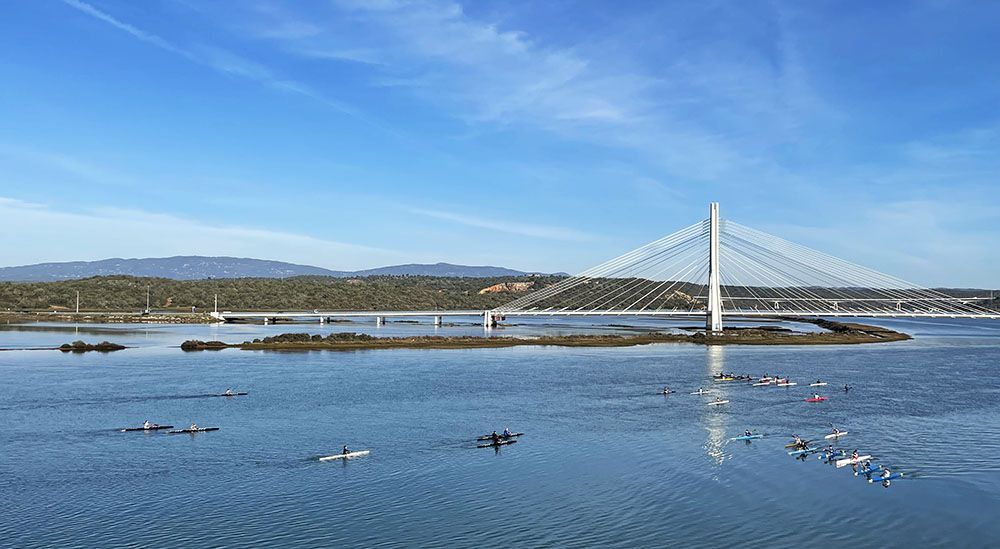
In the city itself we found the Ribeirinha boulevard a particularly nice place to stroll around. There is the marina and a very interesting interactive museum. This museum is located in a former canning factory. It tells the history of the city’s fishing and canning industry. The museum is within walking distance of one of the most famous beaches in the Algarve: the beautiful golden Praia da Rocha. This is where we celebrated New Year’s Eve in covid-proof fashion.
The direct surroundings of Portimão are also worth a visit. For example, directly on the other side of the Arade estuary you have a beautiful walking route along steep cliffs. A little further upstream is the particularly picturesque, centuries-old town of Estômbar. And furthermore, Portimão is known among motor sport fans for its modern Formula 1 racing circuit.
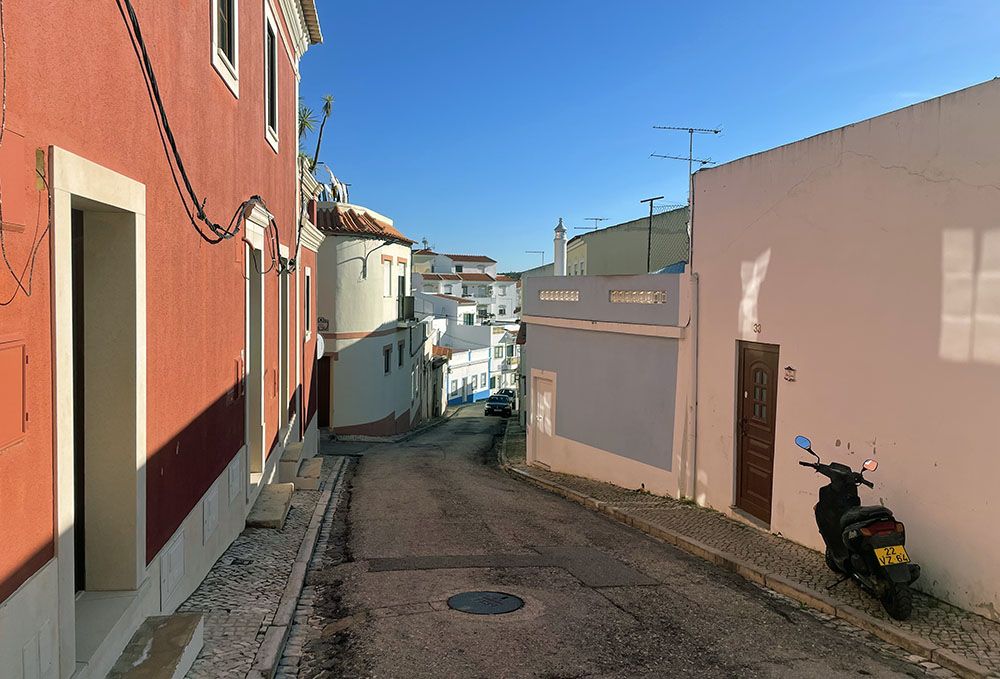
Silves
On the way back from one of our walks, we passed Silves. This very picturesque town is one of the most beautiful towns in the Algarve. It is situated on a hill and looks out over a fertile valley full of orange trees, olive trees and vineyards. In Silves, you can stroll along the narrow, sometimes steep streets. You will pass interesting, old churches and houses, and cosy, small terraces. But the absolute eye-catcher of Silves is the large castle.
The Moors built it in the 11th century on Roman foundations to protect the city. At that time, Silves was still called Xelb, and was the Moorish capital of the west. The copper-red castle walls are almost completely intact. Within those walls, however, there is little left that reminds one of earlier times. An exception is the Museu Arqueológico, an impressive water reservoir with an 18-metre-deep well. There is also an interesting exhibition.
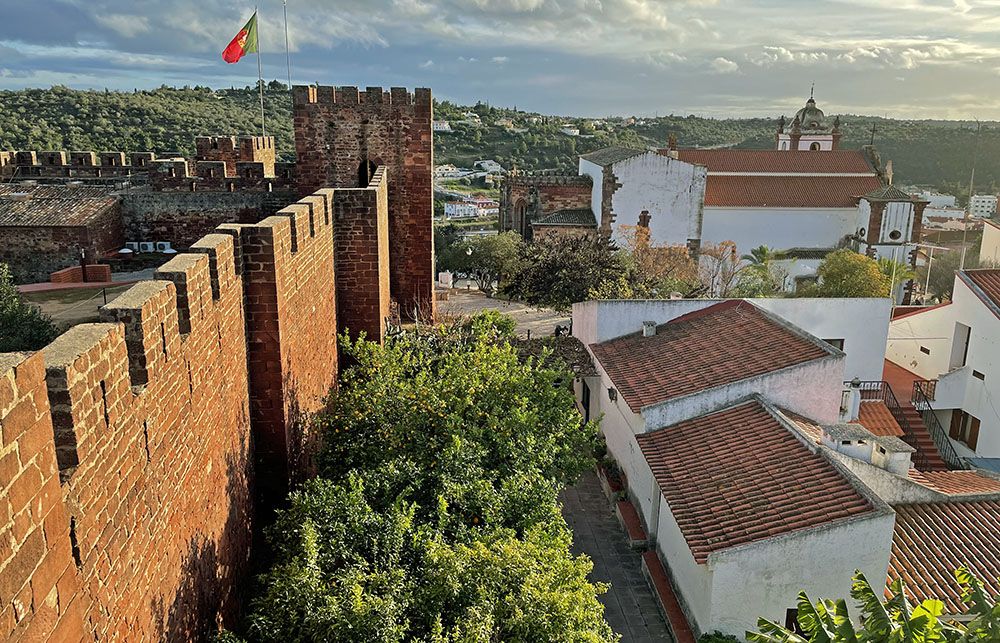
Lagos
Lagos is one of the most famous seaside resorts in the Algarve. The town itself is of great historical maritime importance. From here, the first Portuguese explorers left for distant places. There are medieval castle walls with beautiful old churches and patrician houses inside but also winding streets that are barely wide enough for even the smallest cars. And then there are picturesque shops, cosy terraces and excellent restaurants.
However, it is mainly the coast that attracts holidaymakers. Here you will find an absolutely beautiful coastline with cliffs, caves and caverns. And some of the most beautiful beaches of the Algarve. Imagine spectacular, ochre-coloured rock formations with sparkling azure sea water and the picture is complete. The best way to enjoy this idyllic setting is by boat. Therefore, there are many excursions and the most beautiful boat trips to book.
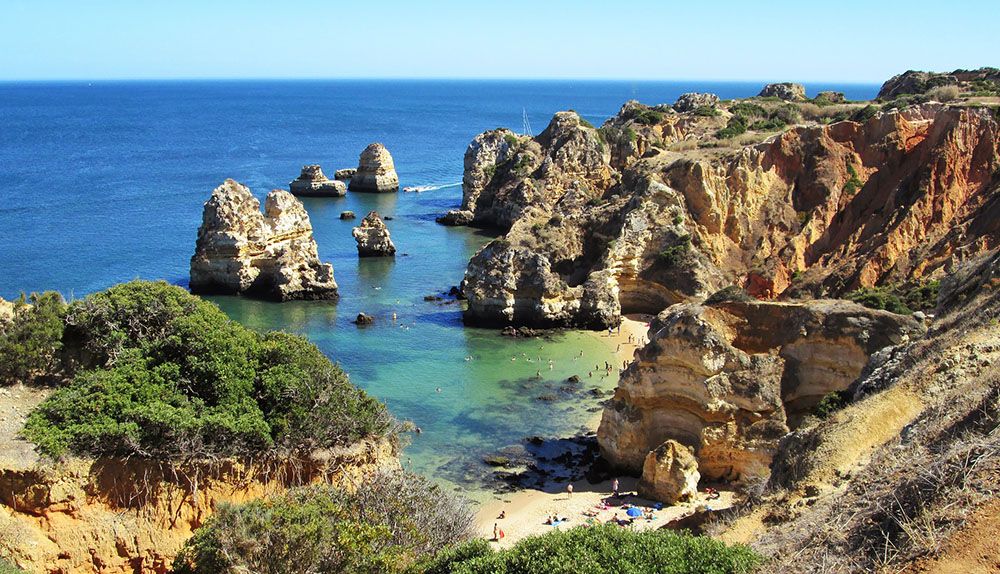
Sagres
Sagres, some say the surf capital of Europe, is the most south-westerly municipality of mainland Europe. The old fishing village is nice to stroll through. It is very relaxed. The crowds of beach tourists do not come here, but the younger surfers. Hendrik the Navigator had a nautical school here at the beginning of the 15th century. The students learned how to sail around the wind-swept cape.
The main attractions, however, are the Cabo de São Vicente lighthouse and the huge Fortaleza: a 16th-century fortress built on 50-metre-high cliffs. From the walls of the fort, you have a beautiful view of the turbulent, Atlantic Ocean. Inside the walls, there is surprisingly little to see. However, there is an ancient, tiny chapel: the Nossa Senhora da Graça. And there is a huge wind rose made of stones. A short walk takes you along the steep cliffs of the headland.
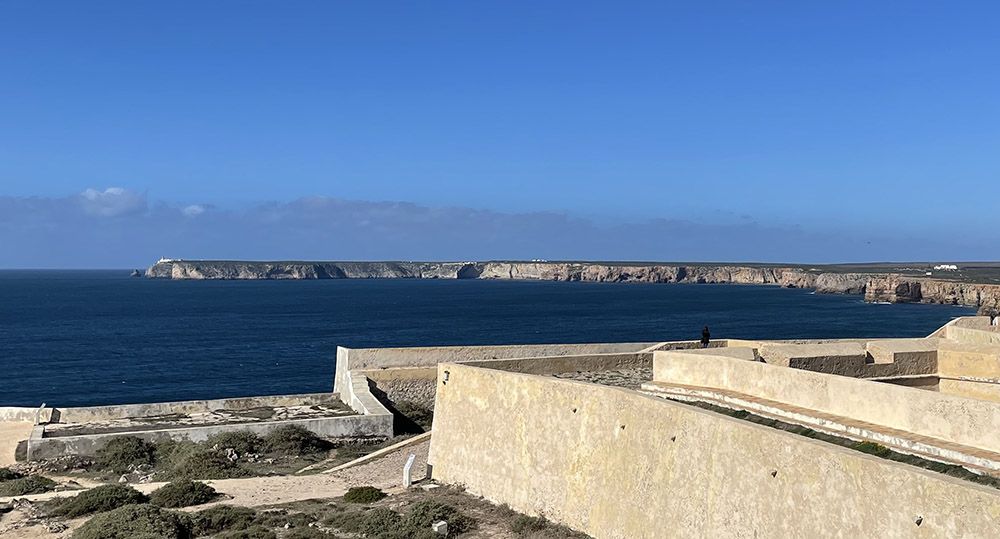
Hiking in the Algarve
In spite of the sometimes-arid landscape, the Algarve offers surprisingly many wonderful walks. We mention a few for inspiration.
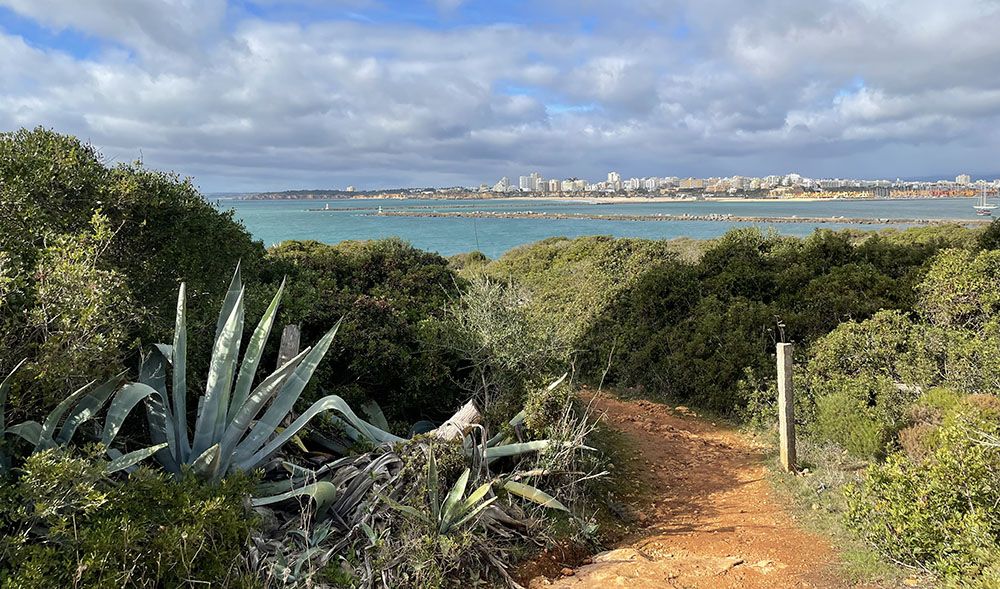
Serra de Monchique
The Serra de Monchique is a beautiful, mountainous area with eucalyptus forests and small waterfalls (in winter). One of the most beautiful walks you can make is to the Foia: with over 900 metres height the highest point of the Algarve. From the top you have a fantastic view over the coastline of the Algarve. On clear days, you can see Portimão and Lagos to the south. And Cabo de São Vicente in the west. There are various routes to the top. The most common is the popular Via Algarviana of twelve kilometres there and back. The Via Algarviana is a 300-kilometre walk that crosses the entire region.
Loulé
What’s more, in the surroundings of Loulé you have many walking possibilities. One of them is the five-kilometre nature walk to Fonte Benémola: a green oasis in a relatively barren landscape of pine forests and cork oaks. During the walk, you follow the stream to its source. You will find interesting flora and fauna. Think orchids and with a bit of luck even otters.
São Bartolomeu de Messines
The previously mentioned Via Algarviana also leads past the reservoir at São Bartolomeu de Messines. We walked here when the coast was covered with a blanket of sea mist. The literal and figurative highlight of the walk is the view of the large reservoir in the Arade River. This part of the Via Algarviana is 29 kilometres long in total. However, we only walked the part from the parking place at the dam to the highest hilltops. It is a bit of a climb, but doable.
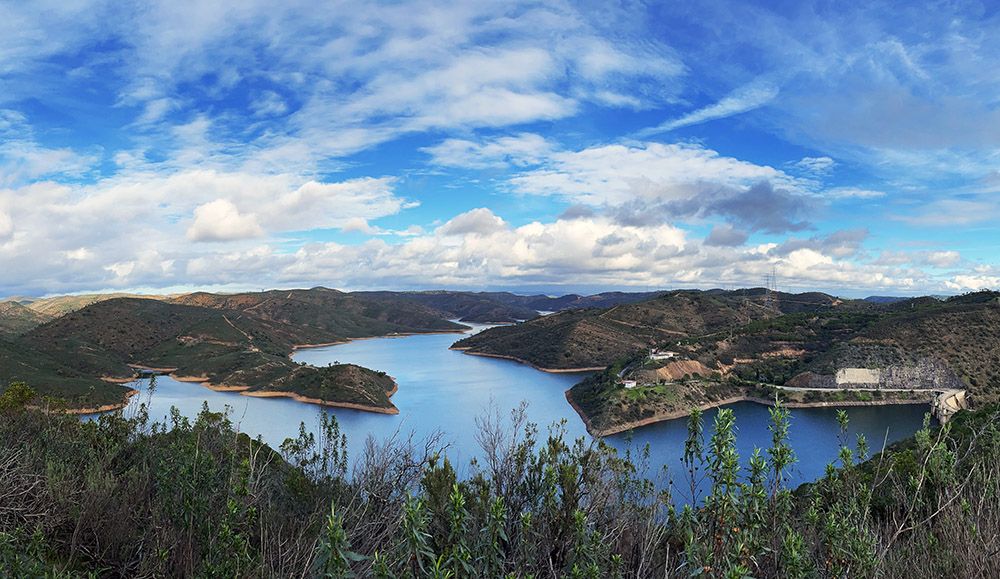
Serra de Monchique
The Serra de Monchique is a beautiful, mountainous area with eucalyptus forests and small waterfalls (in winter). One of the most beautiful walks you can make is to the Foia: with over 900 metres height the highest point of the Algarve. From the top you have a fantastic view over the coastline of the Algarve. On clear days, you can see Portimão and Lagos to the south. And Cabo de São Vicente in the west. There are various routes to the top. The most common is the popular Via Algarviana of twelve kilometres there and back. The Via Algarviana is a 300-kilometre walk that crosses the entire region.
Loulé
What’s more, in the surroundings of Loulé you have many walking possibilities. One of them is the five-kilometre nature walk to Fonte Benémola: a green oasis in a relatively barren landscape of pine forests and cork oaks. During the walk, you follow the stream to its source. You will find interesting flora and fauna. Think orchids and with a bit of luck even otters.
São Bartolomeu de Messines
The previously mentioned Via Algarviana also leads past the reservoir at São Bartolomeu de Messines. We walked here when the coast was covered with a blanket of sea mist. The literal and figurative highlight of the walk is the view of the large reservoir in the Arade River. This part of the Via Algarviana is 29 kilometres long in total. However, we only walked the part from the parking place at the dam to the highest hilltops. It is a bit of a climb, but doable.
Practicalities for your visit to the Algarve
Actually, your visit to the Algarve is not seasonal. We were there in the winter and had mostly blue skies and temperatures between 15 and 19 degrees. Many northern and western Europeans spend the winter here for good reason! In the summer months, it can be very hot. The Atlantic Ocean provides sufficient cooling thanks to the water temperature of around 24 °C.
The quickest way to get there is by plane to Faro. Here it is best to rent a car. You are then free to go wherever you want. But the train is also a good option to move around. The railway connects Lagos in the west with Vila Real de Santo António at the border with Spain. On the way, the train passes through most towns. You may have to change trains a few times, but you won't have to wait long for the next one.
Accommodation is plentiful throughout the Algarve. Options range from resorts and hotels to bed & breakfasts, flats and even complete villas. For luxury, historic and special accommodation, check out the pousadas website. In the countryside, you also have a wide choice of solares and estalagens. We stayed in the very comfortable Arade Riverside Modern Apartment on the Arade River near Portimão. With a hot tub on the roof terrace overlooking the Arade River, we couldn't have asked for better accommodation.
The Algarve is famous for its hot and spicy Piri Algerian chicken, which can be found everywhere. And thanks to its long coastline, it also offers the most delicious fish dishes. Fish, like meat, is often grilled and served with a salad and boiled potatoes or fries. In August, Portimão celebrates the annual 'Sardine Festival'. A perfect time to taste fresh sardines and experience a small-scale Portuguese festival. But javoli (wild boar) and leitão (suckling pig) are also dishes worth trying. Just like the cabrito no forno (goat roasted in the oven).
